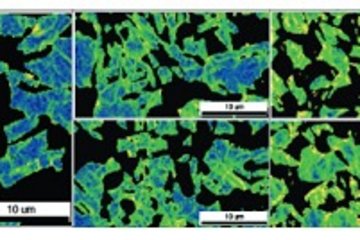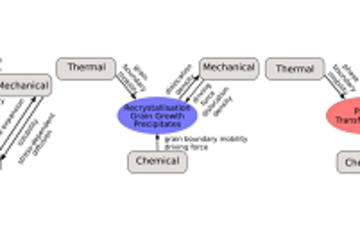All genres
1.
Journal Article
Towards Establishing Best Practice in the Analysis of Hydrogen and Deuterium by Atom Probe Tomography. Microscopy and Microanalysis 30 (6), pp. 1205 - 1220 (2024)
2.
Journal Article
Optimizing site-specific specimen preparation for atom probe tomography by using hydrogen for visualizing radiation-induced damage. International Journal of Hydrogen Energy 50 (Part A), pp. 165 - 174 (2024)
3.
Journal Article
Suppression of Reverted Austenite in Cold-Rolled Maraging Steels and Its Impact on Mechanical Properties. Metallurgical and Materials Transactions A 54 (12), pp. 4976 - 4993 (2023)
4.
Journal Article
Atomic scale understanding of the role of hydrogen and oxygen segregation in the embrittlement of grain boundaries in a twinning induced plasticity steel. Scripta Materialia 234, 115593 (2023)
5.
Journal Article
Hydrogen-induced hardening of a high-manganese twinning induced plasticity steel. Materialia 28, 101776 (2023)
6.
Journal Article
Hydrogen embrittlement of twinning-induced plasticity steels: Contribution of segregation to twin boundaries. Scripta Materialia 225, 115187 (2023)
7.
Journal Article
Understanding the protective ability of the native oxide on an Fe-13 at% Cr alloy at the atomic scale: A combined atom probe and electron microscopy study. Corrosion Science 211, 110848 (2023)
8.
Journal Article
Transmission Kikuchi Diffraction Mapping Induces Structural Damage in Atom Probe Specimens. Microscopy and Microanalysis 29 (3), pp. 1026 - 1036 (2023)
9.
Journal Article
Hydrogen/Deuterium Charging Methods for the Investigation of Site-Specific Microstructural Features by Atom Probe Tomography. Microscopy and Microanalysis 28 (S1), p. 1664 (2022)
10.
Journal Article
Hydrogen and deuterium charging of lifted-out specimens for atom probe tomography [version 2; peer review: 1 approved, 1 approved with reservations]. Open Research Europe 1, 122 (2022)
11.
Journal Article
Laser-equipped gas reaction chamber for probing environmentally sensitive materials at near atomic scale. PLoS One 17 (2), e0262543 (2022)
12.
Journal Article
Hydrogen and deuterium charging of site-specific specimen for atom probe tomography. Open Research Europe 1, 122 (2021)
13.
Meeting Abstract
Advances in Cryo-Atom Probe Tomography Studies on Formation of Nanoporous Metals by Dealloying (Digital Presentation). In ECS Meeting Abstracts, MA2022-01 (47), p. 1983. The Electrochemical Society (2022)
14.
Talk
Visualizing radiation-induced damage by Hydrogen/Deuterium. APT&M, Frankfurt, Germany (2023)
15.
Talk
Interaction of Hydrogen/ Deuterium with defects in two-phase steels. FEMS EUROMAT, Frankfurt, Germany (2023)
16.
Talk
Visualizing radiation-induced damage by Hydrogen/Deuterium. Conference talk at DPG Spring Meeting 2023 (SKM23), Dresden, Germany (2023)
17.
Talk
Investigation of hydrogen embrittlement in high Mn TWIP steel via correlative microscopy (ECCI, APT). Cameca Online Webinar series for Atom Probe Tomography (2021)











